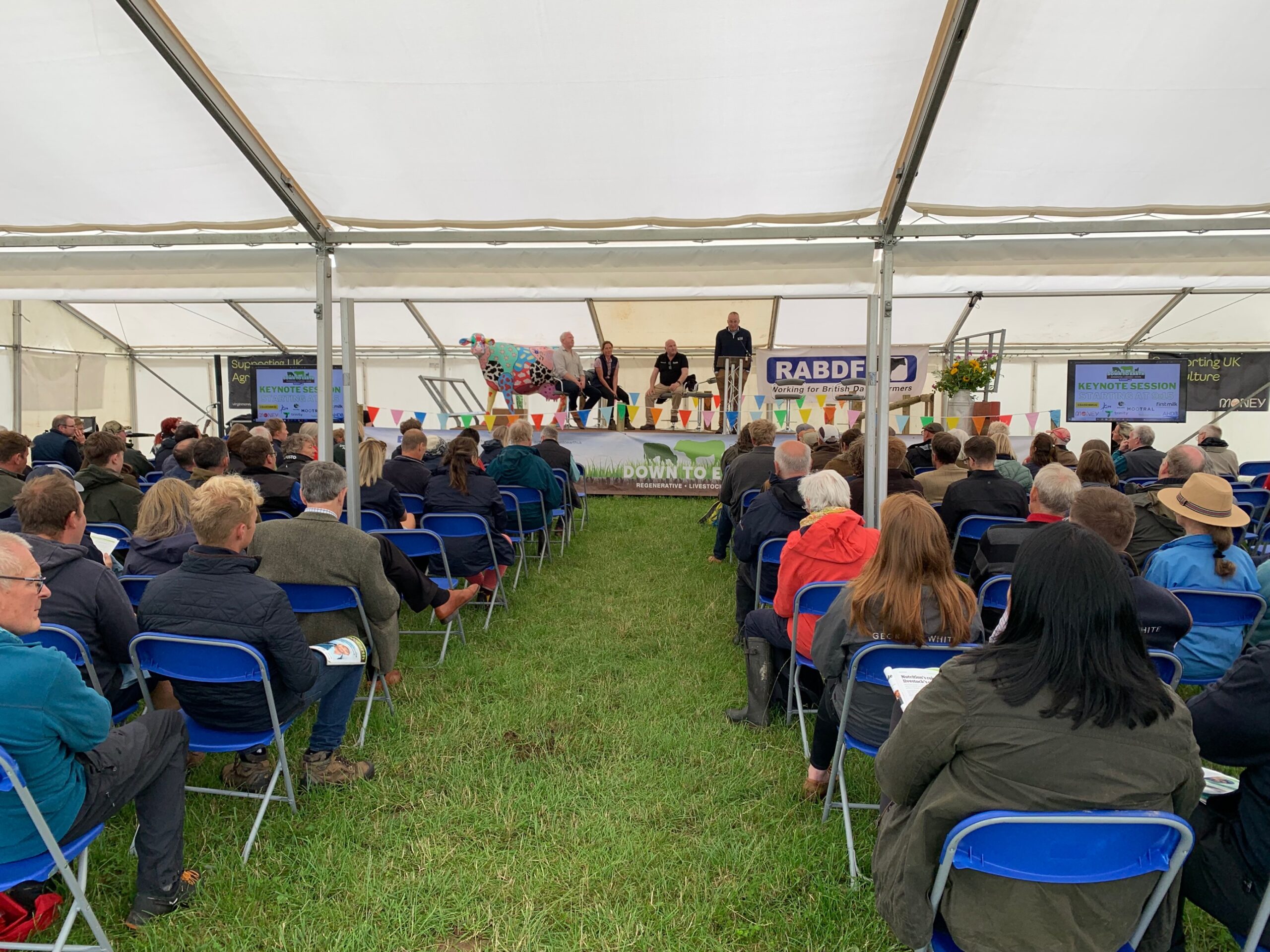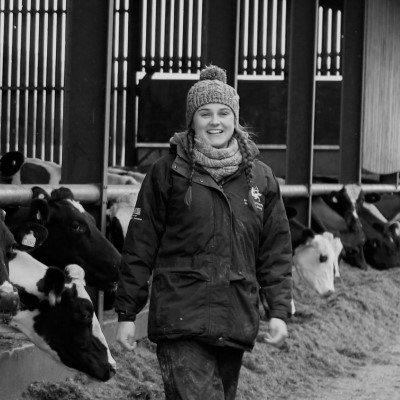CIEL | Blog: Rooted in Regen Ag
Sarah Nightingale

CIEL was pleased to be part of two outstanding regenerative agriculture events in June, beginning with RABDF’s Down to Earth, followed closely by Groundswell.
At its core, regenerative agriculture (regen ag) is a way of farming that focusses on soil health and restoring soil quality. It centres on following 5 key principles: 1. Minimise soil disturbance 2. Protect the soil 3. Keep living roots in the soil 4. Grow a diverse range of crops 5. Integrate livestock.
CIEL’s Projects and Knowledge Exchange Manager Sarah Nightingale shares the take home messages from the events:
A helping hand
Advice and guidance to help farmers begin to apply the 5 regen ag principles on-farm was the focus for Down to Earth. A range of industry speakers, drop-in knowledge building sessions, demonstrations, industry exhibitors and a farm tour provided a systematic view of a regenerative farm approach. Neil Baker, Farm Manager at Rushywood Farm in Somerset, host for Down to Earth South, is currently involved with the Arla Regen Farm project and he, his team and the farm provided a fantastic venue to explore the first steps in a regenerative farming journey, including regen principles being used for maize growing and the positive impact cows can have to the environment. Presentation and conversations during the day showed the serious commitment the whole of the industry is putting into reduce on-farm carbon emissions, protect and increase biodiversity and improve soil and water health.
Heading over to Hertfordshire a few days later, the number of presentations and practical demonstrations at Groundswell was staggering. It was certainly a worthwhile cross-sector event to take part in, and a great opportunity for the wider family of Agri-Tech Centres to come together and showcase our collective offer.
It was interesting to see how the event balanced the views of livestock, arable and horticultural aspects of regenerative farming. After listening to balanced the views from all agricultural sectors, it was clear that livestock is a fundamental component of a regenerative farming approach, even in arable and horticultural regenerative agriculture systems.
Take home messages
CIEL colleagues and I were spoilt for choice when it came to picking our ‘take homes’ from the events. Here’s our best collective effort:
- Productivity vs Profit. Whilst the business case for regen ag remains solid, it’s worth remembering that productivity is likely to decrease during a regenerative farming journey. This is offset however by drastically reduced capital expenditure, alongside newly unlocked access to public and private financial incentives for reducing your environmental impact.
- Public – Private Purse. A combination of public and private finance is needed to incentivise the uptake of conservation-based practices at the farm-level. For farmers starting their journey, nature markets will play a role, but before committing to any credit markets, seek advice from experts.
- Public Finance for Public Good. For famers already championing regen principles, public finance should be rewarding you for your efforts – the environmental land management schemes (ELMS) will help to strengthen public finance for public good.
- A Shoulder to Lean On. Support for the farming sector is hugely important – more than ever before as there are some significant challenges ahead.
- Work from the Ground Up. Regenerative farming principles need to be recognised and supported across the whole supply chain. It’s not just about farm to fork – sustainable and regenerative agriculture starts with great soil and currently, there are significant improvements to be made here across the board.
- Put Your Money Where Your (Great) Soil Is. We need to incentivise regenerative agricultural practices to increase the resilience of UK farming and add value – similar to how the industry has improved animal welfare through various welfare standards.
- Counting Towards Net Zero Quantifying soil carbon and increases in soil organic matter from farmers using regen principles paints a different picture of the whole farm system when it comes to measuring Net Zero. Many farmers might already be at Net Zero when you factor in soil carbon sequestration, but most current carbon accounting does not include this in an emissions inventory. Instead, they focus on emissions sources (e.g. methane from ruminant digestion).
Both events provided a great opportunity to meet up with CIEL Members and wider industry contacts. If you’d like to discuss any of the points featured, please get in touch with the CIEL Team.









